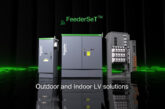
BS 7671: 2008 (2015) Requirements for Electrical Installations contains recommendations that a cable installed in a wall or partition must, in many cases, be provided with additional protection by means of an RCD.
The applicable requirements are given in Regulations 522.6.202 and 522.6.203. These regulations will apply where the installation is not intended to be under the supervision of a skilled or instructed person (see definitions later in this article). This will usually be the case for installations in domestic or similar premises. Installations in many places of work can be expected to be under the supervision of a skilled or instructed person, due to the requirements of health and safety legislation.
Explanation of the requirements of Regulations 522.6.202 and 522.6.203 Regulations 522.6.202 and 522.6.203(i) both call for a cable concealed in the wall or partition to be provided with additional protection by means of an RCD having a rated residual operating current (I∆n) not exceeding 30 mA and an operating time not exceeding 40 ms at a residual current of 5 I∆n.
Regulation 522.6.202 applies where the cable is concealed at a depth of less than 50 mm from the surfaces of the wall or partition, as shown in Figure 1. Regulation 522.6.203 applies where the cable is concealed in a wall or partition having an internal metal frame, metal noggins or similar internal metal parts, irrespective of the depth of the cable from the surfaces of the wall or partition. Figure 2 refers.
As detailed in the Notes to Figures 1 and 2, there is no requirement to provide additional protection by an RCD if the cable concealed in the wall or partition has an earthed metal covering (such as armour), or is contained in earthed metal conduit or trunking, provided that the metal covering, conduit or trunking meets the requirements of BS 7671 for a protective conductor of the circuit. Additional protection by an RCD is also not required if certain requirements for mechanical protection are met, as stated in the notes to Figures 1 and 2, or if the cable forms part of a SELV or PELV circuit meeting the requirements of Regulation 414.4.
Notes to figures 1 and 2
The cables placed in the safe zones shown in Figure 1 must be provided with additional protection by an RCD, except where the cable:
- a) has an earthed metal covering (such as armour) meeting the requirements of the protective conductor of the circuit.
- b) is contained in earthed metal conduit or trunking meeting the requirements of the protective conductor of the circuit.
- c) forms part of a SELV or PELV circuit meeting the requirements of Regulation 414.4, or d) is provided with mechanical protection sufficient to prevent penetration of the cable by nails, screws and the like.
Irrespective of its buried depth, cables concealed in walls or partitions having an internal metal frame, metal noggins or similar internal metal parts, such as those shown in Figure 2 must be provided with additional protection by an RCD except where the cable:
- is installed as stated in a) to d) above
- is provided with mechanical protection sufficient to avoid damage to the cable during construction of the wall or partition and during installation of the cable.
If the cable is installed at a depth of less than 50 mm from the surfaces of the wall or partition, it must be installed in the ‘safe’ zones, as well as having additional protection by an RCD.
Avoiding danger and minimizing inconvenience when an RCD operates
The requirements referred to in this article have led to an increase in the amount of circuits of an installation that require additional protection by an RCD, including lighting circuits, as well as those supplying other loads.
Designers, installers and those who inspect and test an installation, must not overlook the requirements of Regulation Group 314.1 of BS 7671, for the avoidance of danger and inconvenience when an RCD trips.
For example, it will not usually be acceptable for all the circuits of a domestic installation that require additional protection to be protected by a single RCD, as may be the case if a split load consumer unit with only a single 30 mA RCD was installed.
If the RCD tripped, for whatever reason, the supply to all the protected circuits, including lighting circuits, would be disconnected, resulting in inconvenience and possibly danger.
Definitions
The definitions of the terms ‘Skilled person’ and ‘Instructed person’ are given in Part 2 of BS 7671, are:
Skilled person. A person with the technical knowledge or sufficient experience to enable him/her to avoid the dangers which electricity may create.
Instructed person. A person adequately advised or supervised by skilled persons to enable him/her to avoid the dangers which electricity may create.
For other guidance and publications and information about the ELECSA Domestic Installers schemes, visit www.elecsa.co.uk










